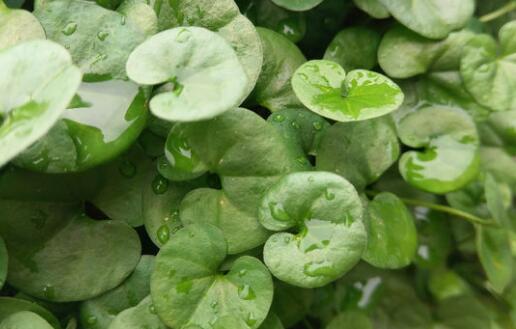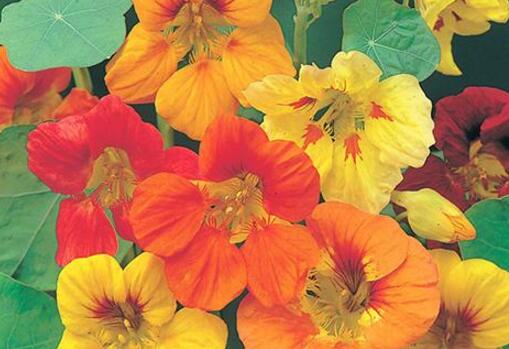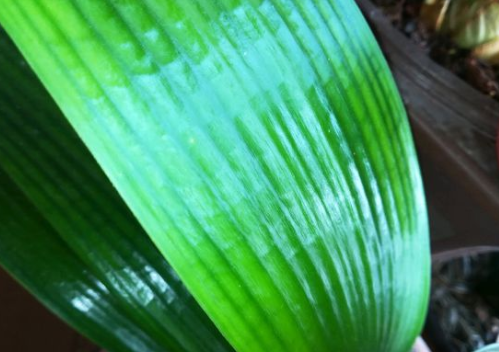How much is the market price of Artemisia angustifolia? How to cultivate in hydroponics? How long will it take to sprout?
Money grass, also known as mirror grass, has a symbol of wealth. It is viewed as a small potted plant because of its round and petite leaves. At present, many people like to plant it on their own balcony to improve the effect of indoor viewing. How much is the market price of money grass? How to cultivate in hydroponics? How long will it take to sprout?

First, how much is the market price of money grass per jin?
The price of money grass is about 10-15 yuan per jin, but it varies greatly due to different prices, such as quality, origin, market and so on.
Second, how to cultivate money grass in hydroponics?
1. Flowerpot
Perhaps everyone thinks that the flowerpots are all the same, so there is no need to choose. Indeed, most flowerpots are only different in appearance, and there are only a few materials, but relatively speaking, the flower pot is relatively special, and there can be no small holes under the container that keeps it. In addition, if you choose a flowerpot made of glass, the effect will be better. Because this plant needs a lot of water.
2. Water
Artemisia mandshurica can be cultivated without soil, but if it is cultivated in water, it is necessary to control the water level. The amount of water about one centimeter above the basin floor is just right. With regard to the quality requirements of water, it is not hypocritical, there is no need to choose mineral water, ordinary groundwater can. In addition, the number of water changes also directly affect the growth of this plant, it is recommended that you can do it once a week.
3. Nutrient solution
Regular dripping of nutrient solution is necessary, although it is also dripping in the water, but it is recommended that you dilute it first. In this way, the leaves of Artemisia mandshurica will have luster.
4. Sunshine
Sunlight exposure times refer to the frequency of changing water, it is also once a week, should not be too much. Although the money grass is small, it can purify the air through its own photosynthesis.
Third, how many days will the money grass sprout?
Sowing method 1: pour the seed into a small container, pour water just short of the water of the seed, wrap it in plastic wrap if the temperature is low, change the water frequently, put it in a cool and ventilated place, wait four or five days, and then it will germinate, and the bud will grow to about one centimeter.
Sowing method 2: soak the seeds with a small amount of water for half an hour, put soil in the basin, pour thoroughly, pour the seeds into the basin together with the water of the soaked seeds, pour them evenly, do not pile them together, cover them with thin soil, spray water, spray twice a day, and the surface can be moist. Put it in a warm place away from the light, it will sprout in about three days, and so the real leaves can be transplanted to hydroponic culture.
Fourth, what is the difference between money grass and copper money grass?
1. Differences in families and genera:
Artemisia angustifolia: it is a perennial creeping herb of plant kingdom, angiosperm phylum, dicotyledonous class, synpetalous subclass, tubular flower order, Primulaceae.
Rabdosia angustifolia: it belongs to perennial herbs of plant kingdom, angiosperm phylum, dicotyledonous class, primitive perianth subclass, Umbelliferae and Umbelliferae.
2. The difference in shape:
The stolon of Artemisia angustifolia is slender, gray pubescent, and takes root at the nodes. Leaves reniform to round, flowers solitary leaf axils, petiole shorter than petiole, filiform, green leaves, yellow florets, capsule globose, 3-5 mm in diameter, glabrous, with sparse black glandular strips, petalized, florescence from May to July, fruiting from July to October.
Rabdosia angustifolia: the plant is trailing, with a height of 5 to 15 cm, often rooting on nodes, brown at the top of the stem, leaves alternate, long stalked, round shield-shaped, 2-4 cm in diameter, margin wavy, grass green, leaf veins 15-20 radial, flowers bisexual, umbels, florets white, fruit divided fruit, florescence from June to August.
Money grass: money grass is also called yellow, mirror grass, Cuiping grass, lotus bract grass, meat wonton grass, gold key, even money grass, opposite grass, leaf money grass, money leaf grass, Qian Qianjin and so on.
3. The difference in nicknames:
For grass and coin grass, Hunan is called cauliflower and lotus, Hubei is called roadside yellow, Sichuan is called a string of money, Beijing and Guangzhou are also called Sichuan gold grass, Yunnan is called real gold grass, Guizhou is called walking grass, Zhejiang and Jiangxi are also called temporary rescue. In Shaanxi, it is also called Cun Gu Qi.
4. The difference in efficacy:
Money grass: sweet, slightly bitter, cool, return to the liver, gallbladder, kidney, bladder meridian, with diuresis, heat-clearing and detoxification, removing blood stasis and detumescence, clearing damp-heat, sand, astringent pain in urine, jaundice, red urine, carbuncle and sores, mainly for hepatobiliary and urinary calculi, heat and gonorrhea, nephritis edema, damp-heat jaundice, sore carbuncle, venomous snake bite, fall injury and so on.
Copper money grass: copper money grass taste bitter, pungent, cold, return to the liver, spleen, kidney meridians, with the effect of clearing heat and dampness, detoxification and detumescence, often used for damp-heat jaundice, heatstroke diarrhea, hemolysis, carbuncle, sore, fall injury and other diseases.
Time: 2019-04-06 Click:
- Prev

How to cultivate Trollius paniculata? The breeding method of dry golden lotus! The dry golden lotus is raised in this way, it blossoms continuously all the year round, and the flowers are colorful!
A plant of the genus Nelumbo nucifera of the family Nelumbo nucifera, a perennial semi-trailing or recumbent plant. Plant height 30cm-70cm. Basal leaves long stipitate, leaf blade pentagonal, tripartite, bifid, with a few lobules and acute teeth. It is a beautiful plant that can blossom all year round.
- Next

What is the reason why the leaves of Cymbidium are very thin? How to solve it? These breeding methods and matters needing attention should be known!
People who have raised flowers all know that Cymbidium has a delicate and elegant appearance, but in the process of breeding, it is found that the leaves of Cymbidium are very thin, what is the reason? How to solve this problem? What is the reason why the leaves of Cymbidium are very thin? How to solve it?
Related
- Fuxing push coffee new agricultural production and marketing class: lack of small-scale processing plants
- Jujube rice field leisure farm deep ploughing Yilan for five years to create a space for organic food and play
- Nongyu Farm-A trial of organic papaya for brave women with advanced technology
- Four points for attention in the prevention and control of diseases and insect pests of edible fungi
- How to add nutrient solution to Edible Fungi
- Is there any good way to control edible fungus mites?
- Open Inoculation Technology of Edible Fungi
- Is there any clever way to use fertilizer for edible fungus in winter?
- What agents are used to kill the pathogens of edible fungi in the mushroom shed?
- Rapid drying of Edible Fungi

